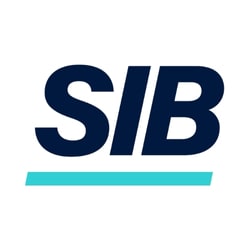Direct-sales company Tupperware digitized its sales approach just in time for the pandemic and is now weighing whether future growth could come by turning its independent sales force into service providers and offering more products for outside the kitchen.
"We're looking at all of our options ... like services in the home," Tupperware executive vice president and CFO Sandra Harris says. "Can you go into the home and organize the kitchen? Can you do things that are more on a service basis? That's part of our strategy to extend the access of what we do. We also know we can play outside the food kitchen, in the industrial space."
Tupperware launched in 1946 and grew into a household name as women across the country invited friends and acquaintances to their home for coffee and to look at the company's latest bowls and other products for preparing and storing food. The hosts collect a commission on the products they sell and also receive a cut of products sold by anyone they recruited to become a seller.
Although the parties have diminished in importance since digital-first millennials joined the workforce, they've remained a core part of the company's sales approach and will continue to be important after the pandemic eases and social distancing restrictions end. But increasingly they will share the spotlight with virtual parties, direct-to-consumer sales, and other changes the company hopes will carry it into a digitalized future.
"You have to change your business to attract the individual entering the workforce who has never had anything but a mobile device," said Harris, who joined the company last year from apparel seller VF Corporation. "Tupperware for the longest time was still writing orders by hand. There was this recognition we clearly had to become more digital. The pandemic accelerated that, and the addition of new skills on the leadership team also helped."
The company's stock performance took a hit starting in early 2018 and stayed down until the start of the pandemic, when demand for its products, supported by the new digital platform, sparked a turnaround.
Online makeover
Starting early last year, the company revamped its websites into e-commerce platforms and launched a suite of tools its salesforce members could use to host virtual parties and showcase products across social media networks.
"Instead of having a party at your house where eight to 10 people would come, they were hosting parties on Zoom or Facebook Live and guests could invite whomever they wanted. So, a party of eight to ten turned into 16 to 20 and continued from there," she said.
Timing of the digital transformation was fortuitous; the pandemic hit a year later.
"It was the method [by which] they could continue to run their business and communicate to their community of users after the lockdown," she said.
The company has about three million salesforce members worldwide, although only about 20% of them are what the company considers business leaders — independent contractors trying to generate an income. The rest are part-timers who use the sales mainly as a way to get products for themselves at a discount and maybe earn some money on the side.
The part-timers are an increasingly important part of its business model. In changes it adopted last year, the company refers to them as preferred buyers rather than as recruits, and treats them as part of their core customer base by offering them loyalty benefits.
This change in status, Harris said, "is a really important pivot in this turnaround plan, because we recognize [that it's important] to have more of a loyalty-type program that [treats them] very differently than someone who's coming in to be a business leader."
Direct sales
New direct-to-consumer online sales is another important pivot, responsible for 4% of the company's revenue, up from zero just a short while ago.
The company hasn't experienced material pushback from salesforce members who see the sales as competition to their parties, Harris said. It can be used as a tool to expand the salesforce's reach and, when used in conjunction with parties, makes it easier to take and fulfill orders.
It also gives them a cut in the sales even if no salesperson is involved in the orders. The transactions are geo-coded, so a commission goes to the salesperson in the same area as the online buyer, even if the buyer doesn't choose to select a salesperson as part of the transaction. "It's at a much lower rate," Harris said of the commission rate.
Going forward, the increase in direct sales, as well as a change in how the company distributes products sold through parties, will increase its infrastructure costs.
"We need more distribution," she said. "However, we can do that through third-party providers. So, there's a balance in how much we can invest from a capital perspective vs. investing with third-party partners."
Also on Harris' agenda — revamping the company's convoluted commission structure. Commission rates are based on a number of factors, and different markets use different rate scales.
Changes won't be easy, because of the degree of independence the company's market areas have. But some of the complexity will go away.
"We actually have multiple compensation models," she said. "And a lot of them are quite complex to figure out. We have to do 'x' number of steps, wait until a certain thing happens, so you don't get cash in hand as quickly as you would with other alternatives. So, that's one of our imperatives: how we can standardize where it makes sense, but also make sure we're truly offering an earning opportunity and how to get that into the hands of the salesforce member faster."






















